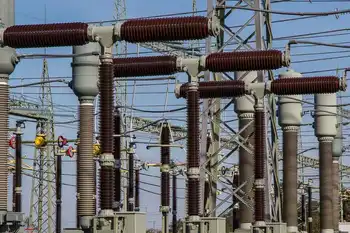Scientists develop solar cells with a twist
The finding, reported in the journal Nature Materials, offers a new way to process conventional silicon by slicing the brittle wafers into ultrathin bits and carefully transferring them onto a flexible surface.
"We can make it thin enough that we can put it on plastic to make a rollable system. You can make it gray in the form of a film that could be added to architectural glass," said John Rogers of the University of Illinois at Urbana-Champaign, who led the research.
"It opens up spaces on the fronts of buildings as opportunities for solar energy," Rogers said in a telephone interview.
Solar cells, which convert solar energy into electricity, are in high demand because of higher oil prices and concerns over climate change.
Many companies, including Japanese consumer electronics maker Sharp Corp and Germany's Q-Cells are making thin-film solar cells, but they typically are less efficient at converting solar energy into electricity than conventional cells.
Rogers said his technology uses conventional single crystal silicon. "It's robust. It's highly efficient. But in its current form, it's rigid and fragile," he said.
Rogers' team uses a special etching method that slices chips off the surface of a bulk silicon wafer. The sliced chips are 10 to 100 times thinner than the wafer, and the size can be adapted to the application.
Once sliced, a device picks up the bits of silicon chips "like a rubber stamp" and transfers them to a new surface material, Rogers said.
"These silicon solar cells become like a solid ink pad for that rubber stamp. The surface of the wafers after we've done this slicing become almost like an inking pad," he said.
"We just print them down onto a target surface."
The final step is to electrically connect these cells to get power out of them, he said.
Adding flexibility to the material would make the cells far easier to transport. Rogers envisions the material being "rolled up like a carpet and thrown on the truck."
He said the technology has been licensed to a startup company called Semprius Inc in Durham, North Carolina, which is in talks to license the technology.
"It's just a way to use thing we already know well," Rogers said.
Related News

Alberta gives $40M to help workers transition from coal power jobs
EDMONTON - Alberta is putting aside $40 million to help workers losing their jobs as the province transitions away from thermal coal mines and coal-fired power plants over the next decade.
Labour Minister Christina Gray says the money will top up benefits to 75 per cent of a worker’s previous earnings during the time they collect employment insurance.
Alberta is asking the federal government to not claw back existing benefits as the province tops up those EI benefits, while also extending EI benefits for retiring coal workers.
Gray says even if the federal government does not step up, the province will provide the…





